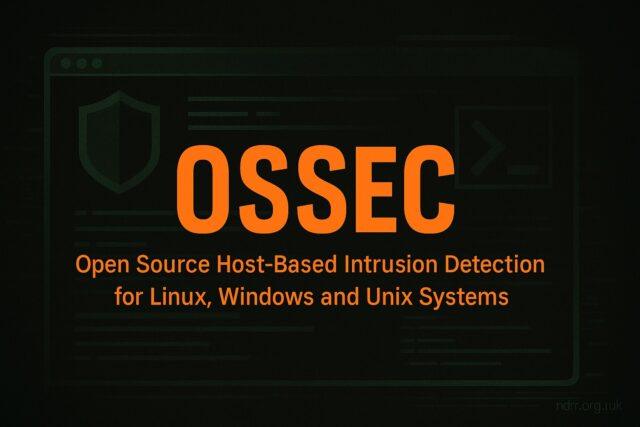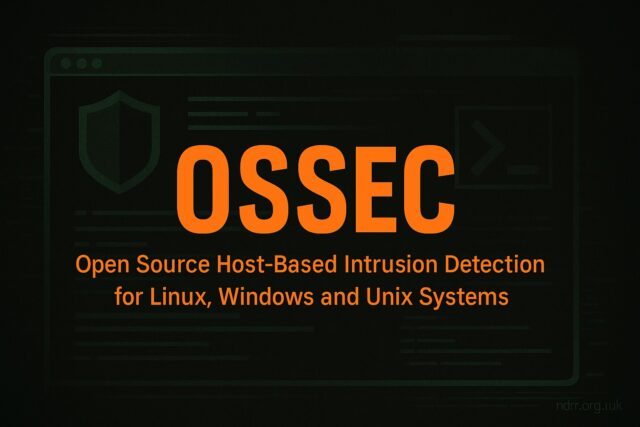In a world obsessed with eBPF, AI anomaly detection, and XDR platforms with $3/endpoint pricing, it’s easy to overlook tools that have been defending systems since before most security startups even existed.

OSSEC is one of them.
Still used in banks, data centres, and embedded Linux environments around the world, OSSEC is a lightweight, extensible host-based intrusion detection system (HIDS) that offers log analysis, file integrity monitoring, rootkit detection, and real-time alerting—without needing a PhD or a SaaS account.
What Is OSSEC?
OSSEC (Open Source Security) is a free, open-source HIDS that performs active monitoring of systems by analysing logs, checking file integrity, monitoring rootkits, and triggering custom alerts.
It follows a centralised client-server architecture:
- The agent runs on monitored systems (Linux, Windows, macOS).
- A central manager aggregates events, applies rules, and triggers alerts.
- Output can be forwarded to SIEMs or local notification systems.
Key Capabilities
- File Integrity Monitoring (FIM) – Detects unauthorised changes to sensitive system files.
- Log-Based Detection – Analyses logs from syslog, SSH, sudo, auth, Windows Event Logs, etc.
- Rootkit Detection – Periodic scans for known rootkits on Linux/Unix.
- Agentless Monitoring – Collect logs over SSH/SNMP from routers, firewalls, and network devices.
- Active Response – Automatically triggers preconfigured actions when a rule is hit (e.g., block IP, restart service).
- Custom Rules Engine – Tune detection to avoid noise or target-specific threats.
Installation (Example: Ubuntu/Debian)
curl -O https://bintray.com/ossec/ossec-hids/download_file?file_path=ossec-hids-3.6.0.tar.gz tar -xvzf ossec-hids-3.6.0.tar.gz cd ossec-hids-3.6.0 sudo ./install.sh |
You’ll be prompted to select:
- Local/agent/server mode
- Email for alerting
- System integration options
Manager and agent install scripts are also available for automation and deployment at scale.
Real-World Deployments
OSSEC has been integrated into:
- Managed security appliances (like AlienVault USM)
- National CERT implementations for FIM and log analysis
- Air-gapped and classified environments due to its minimal footprint
It’s also still referenced in CIS Benchmarks and STIG hardening guides as a compliant HIDS solution.
Pros and Cons
Pros
- Lightweight and agent-based
- Cross-platform (Linux, BSD, Windows, macOS)
- Easily extendable with scripts
- Agentless mode for network gear
- Still under maintenance (as of 2024)
Cons
- No built-in GUI or dashboard (CLI only)
- Can be noisy without tuning
- Not built for container or cloud-native workloads
- The rule engine can be complex for beginners
Conclusion
OSSEC is not new, but that’s precisely why it’s still trusted.
If you want a reliable HIDS for log monitoring, file integrity, and basic active response that works across platforms and doesn’t require you to hand over your telemetry, OSSEC remains a solid option.
Ideal for:
- Compliance-focused environments
- Legacy or embedded systems
- Teams that want control and simplicity over dashboards and subscriptions
Official Website:
https://www.ossec.net
You can read more or download OSSEC here: https://github.com/ossec/ossec-hids
